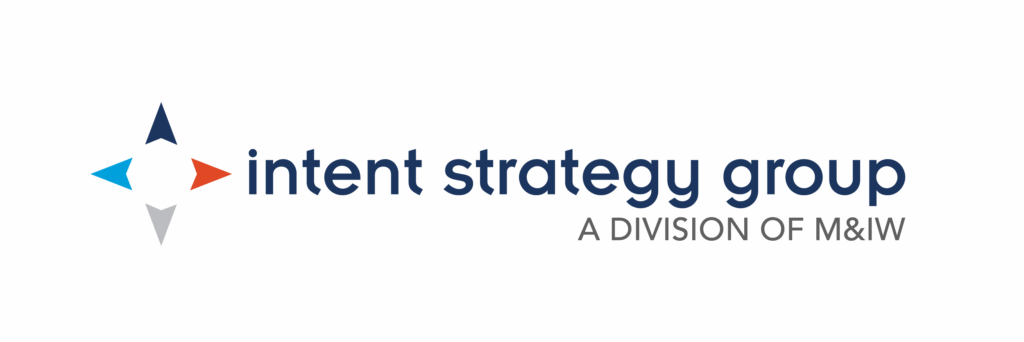DEIB Discussions: Planning Events Inclusive of the LGBTQ+ Community
Whether or not you’re a member of the LGBTQ+ community, you can help make all people feel safe and included at your meetings and events not only during Pride Month but year-round. In addition to sharing key points and definitions from M&IW’s DEIB team, this blog post highlights easy ways to make events more inclusive.
Remember, these recommendations are not a definitive list but rather a starting point for inclusive events. Think of them as stepping stones as your continually strive to produce welcoming events with greater diversity, equity, inclusion, and belonging.
Defining LGBTQ+
LGBTQ+ is an acronym for lesbian, gay, bisexual, transgender, and queer with the plus sign to “recognize the limitless sexual orientations and gender identities” used by members of the community, per the Human Rights Campaign (HRC). For additional definitions, we recommend the HRC’s Glossary of Terms.
These terms can be interpreted differently by different people, and all members of the community can and should use the term that feels right and comfortable to them. For example, “queer,” which was previously used as a slur against LGBTQ+ individuals, may still carry a negative connotation for older members of the community while younger members have reclaimed and embraced it. Regardless of your personal opinions, it is important to respect the words others choose to represent themselves and their identity.
Correct Pronoun Usage
The same is true of pronouns. Using someone’s correct pronouns is important because it acknowledges their identity and is a sign of respect. In the same way that you may show thoughtfulness by spelling someone’s name correctly or using their preferred nickname, using pronouns is a way to show mindfulness of others.
Whether or not you are part of the LGBTQ+ community, sharing your pronouns signals that you are welcoming and will respect their pronouns in return. In fact, those who don’t identify as LGBTQ+ are still encouraged to share their pronouns because it normalizes the process and makes it more familiar to those outside the community. You can also help to normalize this practice by including your pronouns when introducing yourself instead of waiting to be asked and by actively asking others in turn. You can also include your pronouns in your email signature or in your Zoom username; in both cases, pronouns are commonly included in parentheses after your name.
A few additional things to be aware of regarding pronoun usage:
- The best way phrasing when sharing your pronouns is either “I use she/her pronouns” or “my pronouns are they/them,” replacing these examples with your correct pronouns.
- Appearance is not related to pronouns; just because someone looks or dresses masculine does not mean their pronouns are he/him, for example.
- If you accidentally use the wrong pronouns, don’t make a big deal about it. Instead, apologize, correct, and move on.
- Grammatically, they/them pronouns should be used the same way for third-person singular as third-person plural. For example, “they are working in this department” instead of “they is working in this department.” While it may take some getting used to, you actually already use third-person singular in your daily life! If a service technician is coming to your house, for example, you would say “they will be here at noon,” or if you find a wallet on the sidewalk, you would say “someone lost their wallet.”
Five Ways to Make Your Event More Inclusive of the LGBTQ+ Community
The following recommendations serve as a starting point for making your event safe and welcoming for the LGBTQ+ community. Event professionals should stay updated on best practices and add to or adjust these recommendations accordingly.
Choose an LGBTQ+-Friendly Destination
During the sourcing process, ensure all attendees feel safe travelling to your event by choosing a destination that is LGBTQ+-friendly. This means cities and countries where homosexuality isn’t a crime, same-sex marriage is legal, and anti-discrimination laws are in place, as a start. Also, ensure that the culture is as welcoming and inclusive as the legislation; just because something is legal or illegal doesn’t mean the local population agrees. Resources like the Gay Travel Index can help you evaluate whether a potential destination is safe for the LGBTQ+ community.
Create an Inclusive Registration Process
Collect pronouns during the registration process so they can be included on name tags. While this can be as simple as adding another registration field, there are a few important things to keep in mind.
- Pronouns should be an optional step of registration, not required. Not everyone is comfortable sharing their pronouns or is ready to be outed to other event attendees.
- Make it clear that pronouns, if provided, will be included on the name tags; if they will be used or included elsewhere, share that information as well.
- Either use a multiple-choice format with a final option to write in an answer or make the question fill-in-the-blank. While the most common pronouns options are they/them, she/her, and he/him, some people use a combination of these or other pronouns altogether, like ze/zir, so it is important not to limit their options.
If you need to ask attendees for their gender, don’t just offer “male” or “female.” Also include “non-binary,” “other,” and “prefer not to say” to be as inclusive as possible. If you need this information to book travel, explain this reasoning and specifically request that attendees select their gender to match their government-issued ID.
Use Inclusive Language
On your event website, during registration, and at the event, it is important to use inclusive language. “Ladies and gentlemen” may once have been the standard greeting, but now you can welcome attendees with language that is gender-neutral, such as “everyone,” “folks,” or “all.” This is also the perfect opportunity to get creative! For example, if your event is celebrating your organization’s top performers, greet them as sales superstars, or if all attendees are from Indiana, greet them as fellow Hoosiers.
Share Gender-Neutral Dress Codes
Similarly, if your event has a dress code, do not specify appropriate dress for men versus women. Instead, keep it gender neutral so it is inclusive of everyone. If defining a business casual dress code, for example, instead of “Men should wear slacks and dress shirts and women should wear slacks, dresses, or skirts,” simply say “Acceptable attire includes slacks, dress shirts, dresses, and skirts.”
Welcome Diverse Speakers
Even if event content doesn’t include LGBTQ+ topics, you can and should feature speakers who are part of the LGBTQ+ community. Events should have diverse presenters who reflect their diverse audience. This isn’t limited just to gender and sexual orientation diversity, either; also consider race, ability, age, religion, and other types of diversity when creating your speaker lineup.
Get Involved
If you want to be part of the movement to make the meetings and events industry more inclusive, join the LGBT Meeting Professionals Association. This community-based association is the first and only organization solely committed to connecting, advancing, and empowering the LGBTQ+ meeting professional.
Contributor

Kaycee McFalls
Digital Producer, Production & Technology, M&IW
DEIB Team Member


